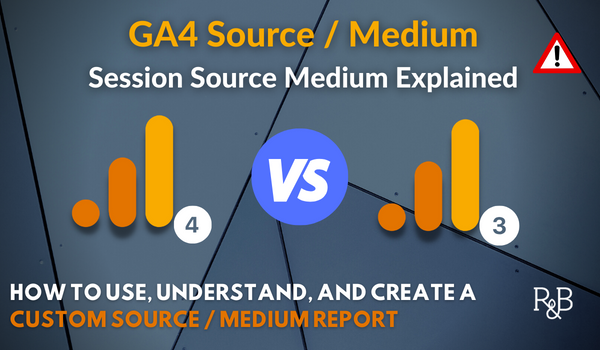Harnessing the Power of Secondary Dimension in Google Analytics to Refine Your Advertising And Marketing Technique and Drive Results
In the realm of electronic advertising, the capacity to tweak approaches and accomplish tangible results is paramount for organizations aiming to remain competitive in today's landscape. Leveraging the power of additional measurements within Google Analytics opens a world of possibilities for marketing professionals looking for to obtain much deeper insights into user actions and customize their campaigns with precision. By unearthing concealed patterns and refining target market division, services can craft targeted approaches that reverberate with their customers on an extensive degree. The prospective to gauge campaign performance with a granular lens further stresses the relevance of using this device to drive success.
Recognizing Additional Dimensions
When evaluating data in Google Analytics, recognizing additional dimensions is essential for gaining much deeper insights right into individual behavior and web site performance. Key dimensions provide standard information such as the variety of sessions or users, yet secondary measurements provide an even more in-depth sight by enabling users to section and analyze information further. By including a secondary measurement, marketing experts can fine-tune their evaluation and discover beneficial patterns that may have or else gone unnoticed.
Additional measurements in Google Analytics can be related to numerous metrics such as traffic resources, individual demographics, and actions flow. By integrating the key dimension of 'touchdown pages' with the second measurement of 'device classification,' marketers can identify which gadgets are driving website traffic to specific landing pages (what is a secondary dimension in google analytics). This info can assist maximize site layout and web content for better user experience across different gadgets
Studying Individual Behavior Patterns
To effectively understand user behavior patterns, a thorough evaluation of information within Google Analytics is important. By delving into user habits patterns, marketing professionals can obtain valuable understandings right into just how site visitors connect with their internet site, which web pages are most interesting, and where possible traffic jams or drop-off factors might exist in the conversion channel. Google Analytics uses an array of devices to assess user behavior, such as behavior flow reports, event tracking, and goal funnels.
Behavior flow reports provide a graph of how users navigate through the site, showing one of the most typical paths individuals take along with where they leave. Occasion tracking allows marketing professionals to monitor particular interactions on the site, such as button clicks or video sights, providing a deeper understanding of user involvement. Objective funnels track the steps customers take in the direction of completing a specific objective, highlighting areas for renovation in the conversion procedure.
Enhancing Target Market Segmentation
Upon analyzing customer habits patterns, marketing professionals can even more maximize their methods by enhancing target market segmentation strategies in Google Analytics. Audience division enables the categorization of internet site visitors right into particular groups based upon various attributes such as demographics, habits, and interests. By using Google Analytics' second dimensions, marketing experts can fine-tune these segments even better to acquire much deeper insights right into their audience's choices and actions.
Enhancing audience division enables marketing experts to create even more targeted and personalized advertising and marketing projects. By determining distinct customer groups, marketers can tailor their messaging, content, and uses to much better reverberate with each segment's special characteristics and needs. This level of personalization can substantially enhance engagement, conversion rates, and total advertising efficiency.
Additionally, through improved target market segmentation, marketers can much better understand the customer trip and enhance touchpoints along the course to conversion. By evaluating just how various segments interact with the website and advertising and marketing channels, marketing experts can recognize opportunities to improve individual experience, address discomfort points, and eventually drive more conversions. In general, refining audience segmentation in Google Analytics is a powerful strategy for maximizing marketing performance and driving lasting organization development.
Tailoring Advertising Campaigns
Marketing experts can maximize moved here their advertising and marketing projects by customizing content and messaging to match the one-of-a-kind features and demands of specific audience segments. Customizing advertising and marketing projects includes producing tailored experiences that resonate with different groups of consumers. By leveraging understandings from second measurements in Google Analytics, online marketers can gain a much deeper understanding of their target market's behavior, choices, and demographics. This data enables the production of targeted projects that speak straight to the rate of interests and pain points of specific segments, enhancing the possibility of engagement and conversion.
Through the evaluation of second measurements such as traffic resources, devices used, or geographic location, marketing experts can fine-tune their messaging to be more relevant and impactful. By tailoring marketing campaigns based on insights from secondary dimensions, businesses can take full advantage of the efficiency of their initiatives and inevitably drive far better ROI.
Gauging Project Efficiency

One essential aspect of determining campaign performance is tracking conversions. By establishing goals in Google Analytics, services can monitor details activities taken by customers as an outcome of the project, such as authorizing or making an acquisition up for a newsletter. Comprehending the conversion price and the conversion path can offer important insights into the effectiveness of various marketing networks and messages.
In addition, examining metrics such as click-through prices, bounce rates, and session duration can aid marketing professionals examine individual interaction and the effect of the campaign on website web traffic. By incorporating key metrics with additional dimensions have a peek here in Google Analytics, businesses can improve their advertising and marketing methods, enhance campaign efficiency, and drive much better results.
Verdict
In verdict, taking advantage of the power of additional dimensions in Google Analytics can give beneficial insights into user actions patterns, improve audience division, tailor advertising campaigns, and measure project efficiency. By utilizing this attribute successfully, services can fine-tune their marketing strategies and drive advice better outcomes. It is vital for marketers to utilize the data offered through second measurements to make educated decisions and maximize their projects for maximum impact.

 Josh Saviano Then & Now!
Josh Saviano Then & Now! Mason Gamble Then & Now!
Mason Gamble Then & Now! Tyra Banks Then & Now!
Tyra Banks Then & Now! Meadow Walker Then & Now!
Meadow Walker Then & Now! Kerri Strug Then & Now!
Kerri Strug Then & Now!